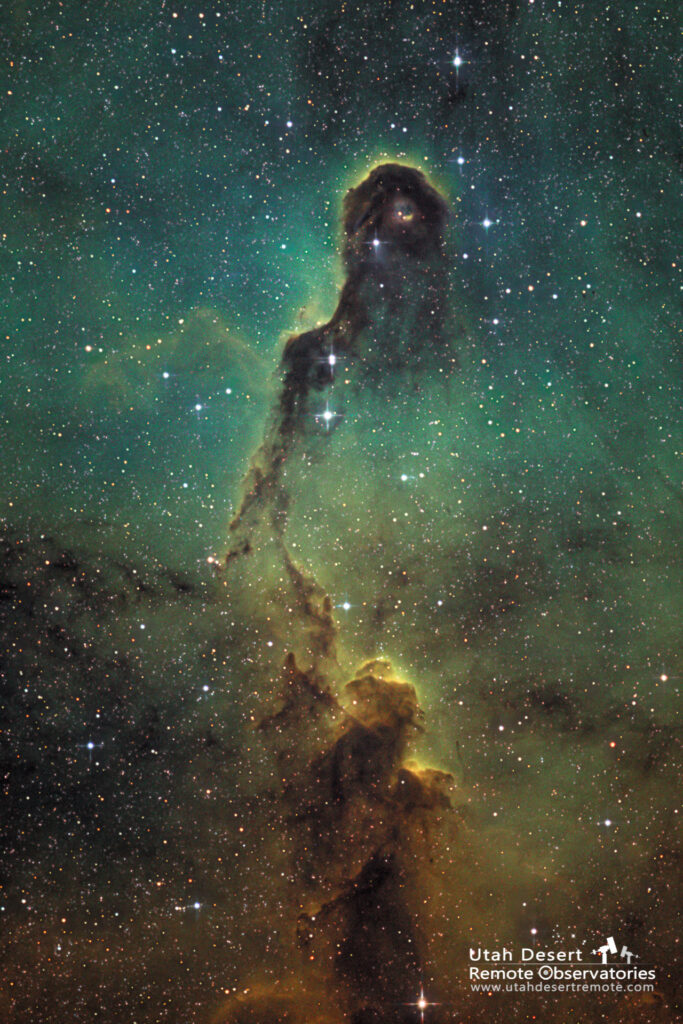
The Elephant Trunk Nebula is a beautiful region that’s rich in hydrogen, oxygen and sulfur gases. By using specific narrowband filters we can isolate those gases so they are visible in the final image.
Normally ionized hydrogen glows in a deep red color, oxygen glows in a green-blue color and sulfur also glows in a red color. The Hubble palette was designed to maximize the visibility and color separation of the different elements by mapping sulfur to red, hydrogen to green and oxygen to blue. It’s not a natural color image but it’s very good at showing the structure and composition of a nebula.
The short 20 minute video below shows how I approached processing and color mapping this image using Photoshop. One of the keys is that I use a layer-based process that retains the flexibility to fine tune and adjust the colors as you go.
This was imaged using the PlaneWave CDK12.5 mounted on a Paramount MX+ mount using a ZWO ASI6200MM Pro monochrome camera. I exposed around a half-dozen each of hydrogen, oxygen and sulfur for 600 seconds each. I also exposed a set of two each of red, green and blue for 120 seconds each to capture the star colors.
All of this equipment is available to rent by the imaging hour from Utah Desert Remote Observatories. For more information check out the Imaging Experience page on this website.
